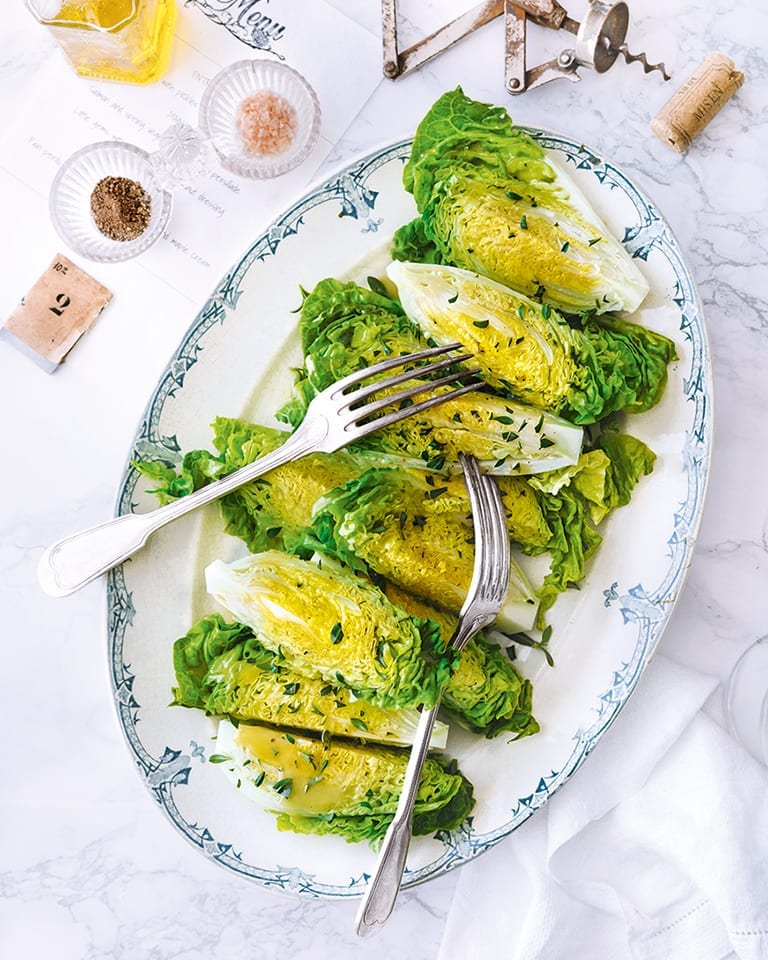Why food writers are fuelling waste
When it comes to good cooking, only the freshest, most perfect produce will do, right? Wrong, says Xanthe Clay – the obsession with buying ‘only the best’ promotes a culture of waste.

The big celeb chefs do it and just about every food writer worth their salt is out there preaching the mantra of the moment: “Thou shalt not waste.” Or, to be more precise, thou shalt not waste food. Over-shopping is the eighth deadly sin; woe betide you if you let salad leaves turn to mush. Professional foodies are falling over themselves to tell us what to do with vegetable trimmings and meat carcasses, and for that I give a resounding cheer.
The amount of food we waste is a well documented scandal, with nearly £600 worth of food per household winding up in the bin each year. That’s enough to fill Wembley Stadium 10 times over – a crying shame when you consider the environmental impact of piles of rotting food (all that methane), not to mention the preposterousness of growing and shipping ingredients, only for us to let them decompose.
But I’ve had it with food writers wagging their fingers as though it’s all the fault of naughty home cooks wantonly spending their hard-earned cash on food they then throw out. There’s a bit of (whisper it) hypocrisy here. I reckon it’s time we food writers accepted our part in the problem: our obsession with using the best, the most exquisite, the most perfect ingredients. How often have you read diatribes about using only the best fruit and veg at the peak of their season; that the dish isn’t worth cooking without the freshest, finest fish money can buy? Even for jam and juice, we’ve been telling readers sternly, “You’ll only get out as good as you put in.” Well, I say it’s all past-its-best baloney.
A large part of being a good cook is knowing how to make the best of what you have. That means cutting out the manky bits of an apple and using the rest, like Granny would have done with the windfalls, or pulling off the yellow leaves of a cabbage because the inside is still good eating. Being resourceful is part of the fun. Sure, those beautiful taut-skinned aubergines piled high in the market will be extra good to eat, the deepest red strawberries tend to be the best and a lettuce that’s perky and crisp is a joy. The counsel of perfection is to plan your meals down to the last pea and shop daily so everything is as fresh as can be.
But let’s get real: for most of us, it ain’t gonna happen. Stick to picture-perfect produce and you’ll be missing out on some delights, too. Those mushrooms that have gone leathery in their paper bag have a far more intense flavour than those fresh from the farm, and they’ll fry up to Bovril-like savouriness. About to chuck out those bendy carrots? Stop! Give them a wash
if they need it (they’ll be nigh on impossible to peel), then slice up for a casserole – they’ll brown with the onions far better than just-pulled ones; or slice them for a salad – they’ll be sweeter than anything you’ll pick up in the shops. Brown-patched, faintly boozy-scented pineapples are brilliantly flavoured once peeled and sliced. I could go on, but you get my point. All of them taste better, in their way, than their oh-so-perfect counterparts.
So ignore us food writers when we get too prissy. Flex your culinary muscles. Do a Sherlock and get that foodie mind palace working. And if you can’t make a silk purse from a stack of oozing, squishy tomatoes, you can still make a damn good pasta sauce.
Do you agree with Xanthe or do you take a different view? Let us know in the comments below.
Subscribe to our magazine
Food stories, skills and tested recipes, straight to your door... Enjoy 5 issues for just £5 with our special introductory offer.
Subscribe
Unleash your inner chef
Looking for inspiration? Receive the latest recipes with our newsletter